The Polestar Precept EV Is Ready To Embrace What Other Cars Hide
A world in the grip of coronavirus lockdown probably isn't the easiest time to reveal an aspirational luxury concept EV like the Polestar Precept, much less to bring a mass-market electric car to market. That, though, is the situation in which the automaker finds itself in 2020. Were it not for COVID-19, the striking Precept concept would have been fighting for headlines at the Geneva Motor Show.
Instead, with the car show canceled, the automaker finds itself bucking industry trends, starting up Polestar 2 production in China while its peers are idling their factories around the world.
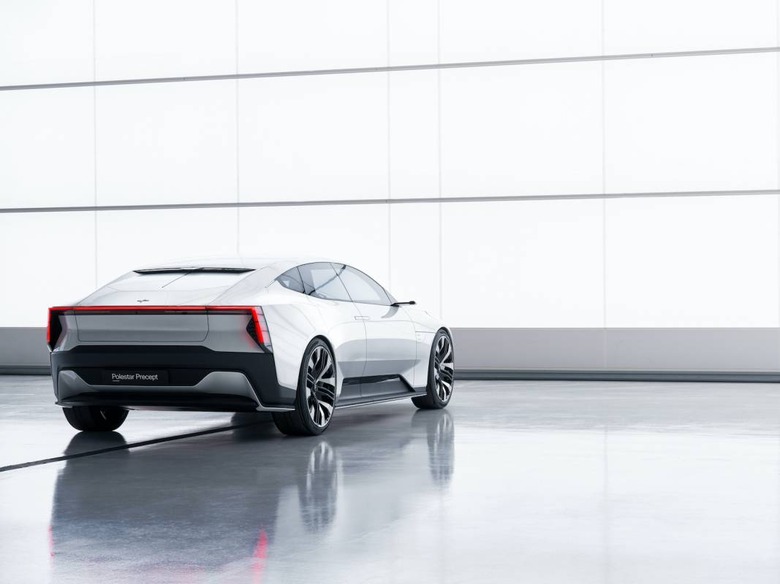
"Today there are so many more important questions and topics than show cars or glamorous industry get-togethers," Thomas Ingenlath, CEO of Polestar says. "We do not want to pretend that we can just quickly get back to normal: play "The Show Must Go On." But, since we are all locked in the situation of social isolation; spending lots of time at home, lots of time online in front of the screens, we thought we could bring a bit of entertainment, infotainment, and as well food for thought about a different kind of sustainable future."
You could argue it's terrible timing for Precept, but Polestar Head of Design Maximilian Missoni isn't willing to concede defeat. I caught up with Missoni as Precept prepares to make its big splash digitally, to talk about why the concept is so important in helping distinguish Polestar from Volvo and Geely, how luxury has a new language in the electric era, and why privacy might prove to be one of the biggest barriers to autonomous driving.
The following interview has been edited for clarity and length.Precept is probably closest in category to a sports sedan, yet the growth in the auto industry right now is typically SUVs and utility vehicles. Is the concept wishful thinking, and how can its themes translate to more retail-friendly categories?
"I mean, the question of why is it not an SUV, or why are you doing this rather than an SUV, I get that. It's quite a US question to get. Of course there's a big trend toward SUVs, and our next car – the Polestar 3 – is going to be an SUV.
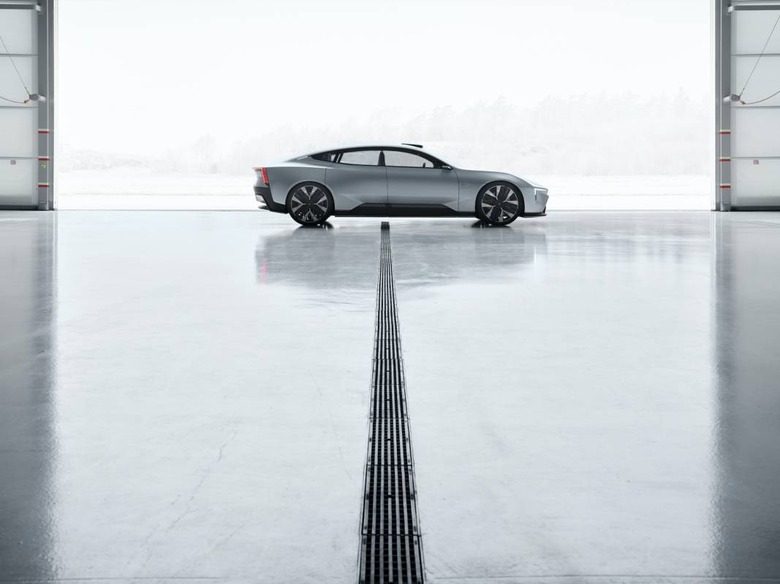
But I don't think that this style of body style is dead in any way. Okay, the Precept is extremely sleek and "fastback" – but for a concept car that is kind of what you are expected to do!"
Precept both embraces some traditional "luxury" and "sports" cues, like the big wheels, but also intentionally sets some others aside. How does electrification enable that transition, particularly in the luxury segment where many buyers are fairly conservative?
"You know, the whole electrification journey, the journey towards sustainability is a big push from everybody. Now, it seems like everybody at the same time goes, "oh, wow, we're really gonna do something" and it makes total sense. And it is good that it's happening. And then all the technologies that we're getting, that at first designers were like, "oh, damn, now we have to hide, you know, a sensor and the radar. And then there's LIDAR as well."
So we started to try to sweep them under the carpet as long as we could. And I think now is the time that we as designers – and with Polestar we have that chance – because there's basically a white, blank sheet of paper at this point, more or less. Where we can say, look, okay, we could just apply the same things as we always have: do some chrome strips, and some leather interiors, and some nice wooden panels. And then everybody would understand "that's premium" because that's what I've learned since I was a child. That's what "premium" means.
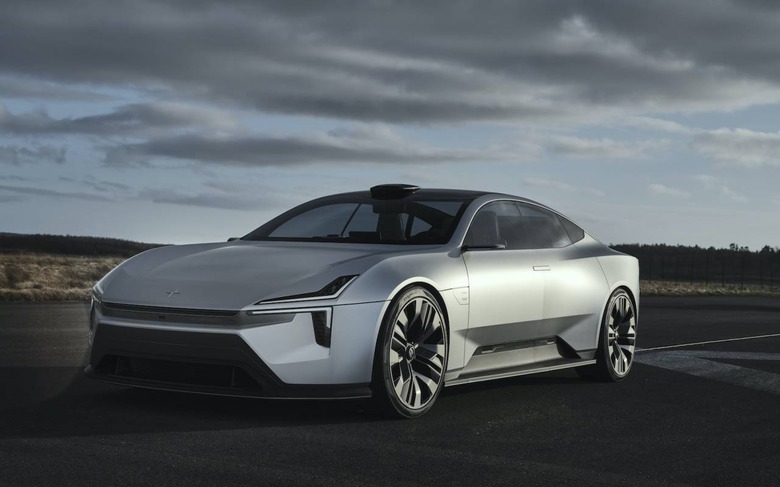
And then we hide all the sensors and then we hide all the sustainable stuff, under a nice leather dashboard. But we said no, we do the opposite. We try to use those ideas and those changes in society and use them as an inspiration for the team. So let's celebrate the radars and LIDARs and ultrasonics; let's celebrate the 3D knitting and the flax-based composite materials. And, you know, I think if we wouldn't have done that, it would have been a bit of a waste of a new brand.
Because you're just doing what you've always done with a new logo. And then, you know, of course, you tick the boxes and make it more sustainable and try at least, but we really turned that into something new. And that's why I'm so keen for you and for people to see Precept live, because it really looks premium and luxurious, even though it doesn't play any of the tricks that the classical luxury cars do."
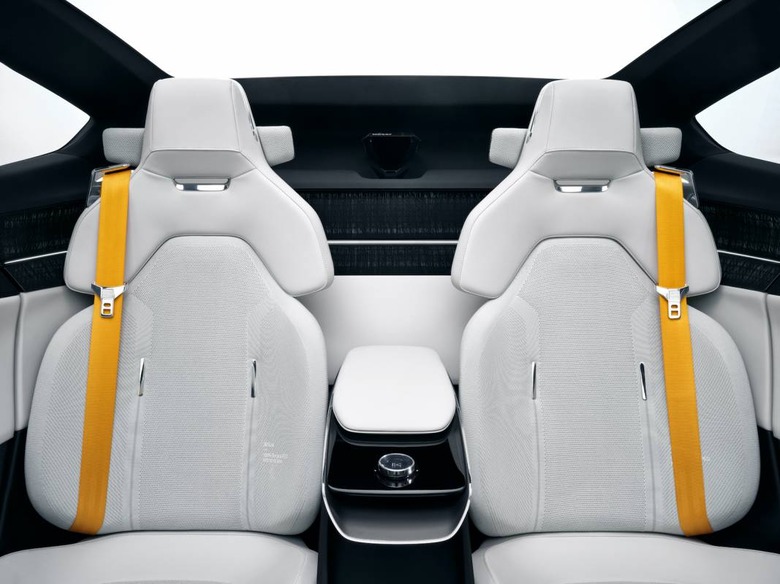
At the moment it seems every new EV is judged by range and speed – how does Polestar reset those criteria, or does it even need to?
"Well I think that some of these criteria they are important. I mean, we shouldn't kid ourselves: range is important, and 0 to 60 you can debate how important is it in everyday life. But it's definitely important to have a well-performing powertrain and Polestar is quite keen on delivering on driving dynamics as well, not just a straight line.
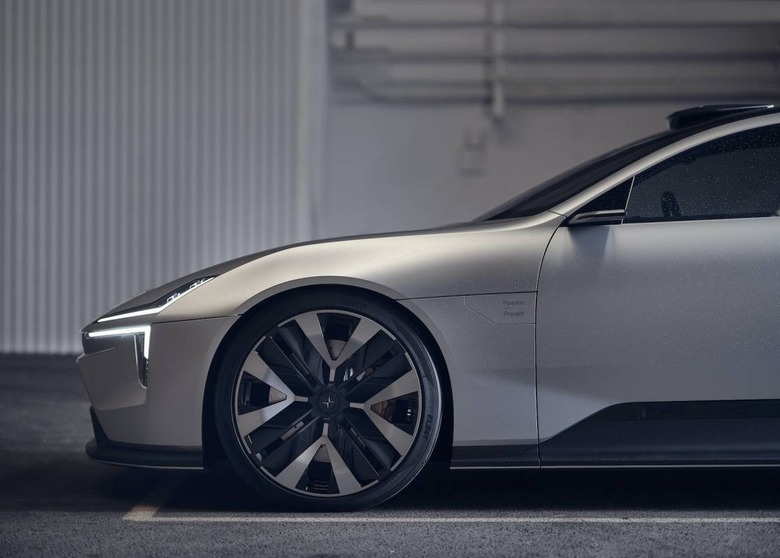
So Polestar really puts a lot of emphasis on the everyday driving dynamics. I think these are boxes to tick and Polestar will tick those boxes. But what we want – that's because of the combination of Thomas [Ingenlath] and me having worked together for a long time – we really want to establish that brand that is also you know, stepping up and creating a new normal in terms of design. So shifting the paradigm when it comes to car design."
Obviously we're living in strange times right now. I don't want to talk about coronavirus specifically, but I do think we're at a potential pivot point where suddenly working remotely, or specifically from home, is more available to people as an option they might not have had before. How do you see that affecting transportation, and the demands we place on vehicles?
"I think when we get through this we will, to a large extent, revert to our normal life as we as social beings are used to. I think that flying all over the globe all the time, just to have a meeting somewhere in China... I think this feels already quite strange, you know? I mean, we've been quite cautious at Polestar because we're an electric brand, we focus on sustainability. Everybody had to check their footprint and we ask ourselves a lot, how much do we need to travel?
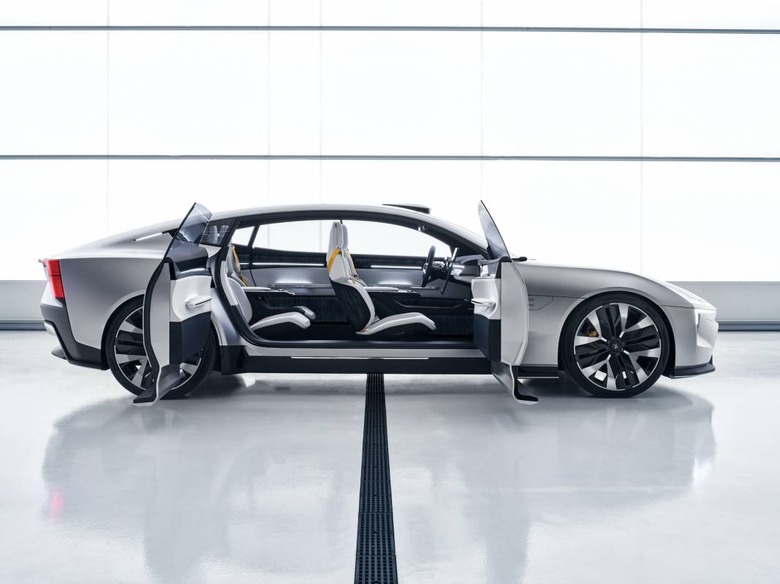
But I think the car, if it's done and designed and built in as sustainable way as possible, I think the car as this safe space for yourself, is actually – in big cities, for example – is maybe even seeing a renaissance. The car is one of the few spaces where nothing has changed: you can still behave the way you've always behaved, because you're on your own or with your family. So I don't know if [coronavirus] will have such a massive impact on cars, I don't share that view. But it will definitely influence society."
The idea of the car as a luxury space by virtue of its isolation is an interesting one, because it suddenly puts the emphasis on the quality of the interior space, not the exterior. How does that change your focus as a designer?
"First of all, form factor-wise I think electrification is a lot about range. And you can discuss now if people are just not used to living with electric cars, so they're more worried about the range: the range anxiety is bigger than the actual problem. But it is all about range, so aerodynamics plays a big role, the sleek silhouette is still is still quite relevant. And I experience it from my day-to-day work: aerodynamics and the issue of making cars work really well aerodynamically is becoming bigger and bigger.
But you're right and the inside of the car, that becomes more and more – for two reasons – an important topic. The main reason would probably be the the journey towards autonomous driving. If we we change zones in cities or whatever, where the car is entirely autonomous – and only autonomous cars – then the whole design can change radically. People always ask me how big electrification influences the design of cars? And it's actually not that great because many things like safety – active safety, passive safety – is pretty similar.
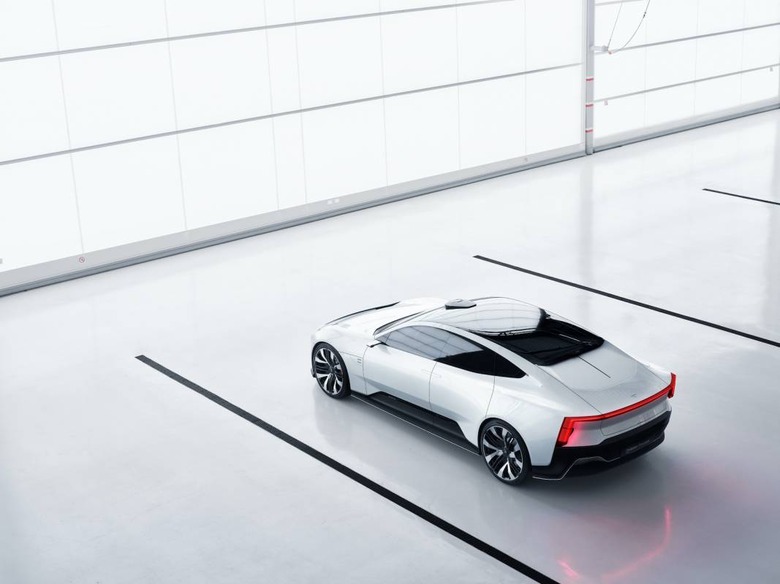
But I mean, that part is not changing so much. So the parts that you need for impact, and safety, and all the regulations that come with a driver having to be able to see and control. But once you take that out of the equation, body styles are a completely new story.
But there is another aspect that I think is quite interesting about privacy in cars. The car being one of the last places where it's becoming so luxurious because it's your private space. When we talk about autonomous driving, we sometimes forget that all the providers of ride-hailing or these systems, they need to monitor what's going on. At any point in time, they need to be able to press a button and see what's happening in their vehicles. So you will never be private, fully. Privacy will actually become a big luxury, which you can only have in your own cars.
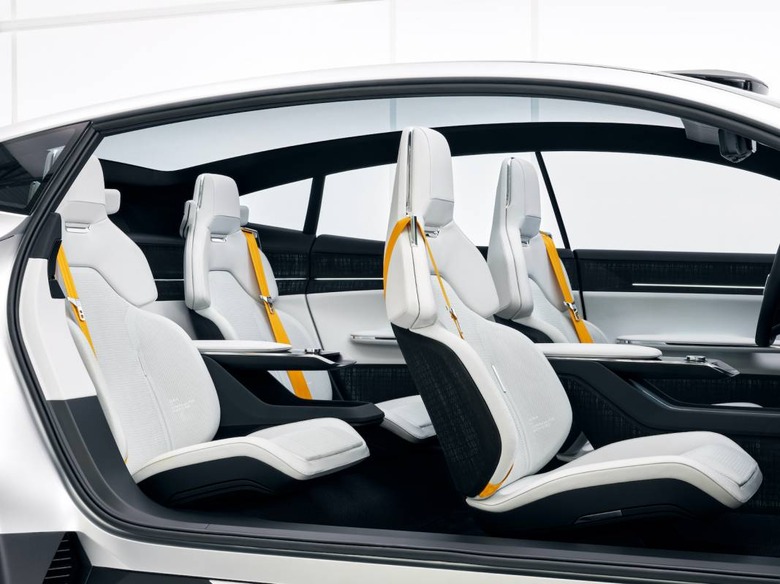
You know, in your private vehicle. So people say "will the big rollout of autonomous driving, will that replace your private car?" Because you get from A to B and it's quite cost-efficient. But what you're never going to have is privacy anymore. You can never have a conversation that you want to have. You can never, I don't know, pick your nose! So this is becoming a completely new type of luxury."
That may be true, but Precept has its fair share of sensors inside the cabin, too. We're generally seeing a shift from the expectation that the car's sensors will be outside, facing out, to the idea that there'll be more inside, watching us.
"I think we are always looking at how to integrate technology into a car. And I think that comes from the Volvo world, because Volvo is very much the brand that wants to support the driver but not push itself into the foreground. You know, it's very much in the background, making sure that you have everything you need. It's a very Scandinavian concept.
Polestar is much more about showing off technology. So maybe the technologies that are being used are the same, and coming from the same research. The joint research of the brands. But Polestar is really communicating in terms of design, look, that this is an eye-tracking sensor. It's not hidden somewhere behind the surface. It's like, "look, I'm an eye tracking unit and I'm extremely complex and cool!" And I think that's the first stage of adopting technology, showing it off, and then there's a second stage of hiding it away behind the surfaces and so on."
How did you prioritize what to include in Precept, so as not to end up with a list of features so long that the whole concept just turns into a flight of fancy?
"One point is always to create a minimalistic and an easy to understand environment, which you then reveal layer by layer. I think that's our job as designers, that's really where we come in, because if you ask the engineers, they like to have as many systems and as many things as possible on the first layer. And we have to say, look, it has to first be calm and serene, and then if you want, you can engage with something and then that creates interest. But if you don't want it, it's not there.
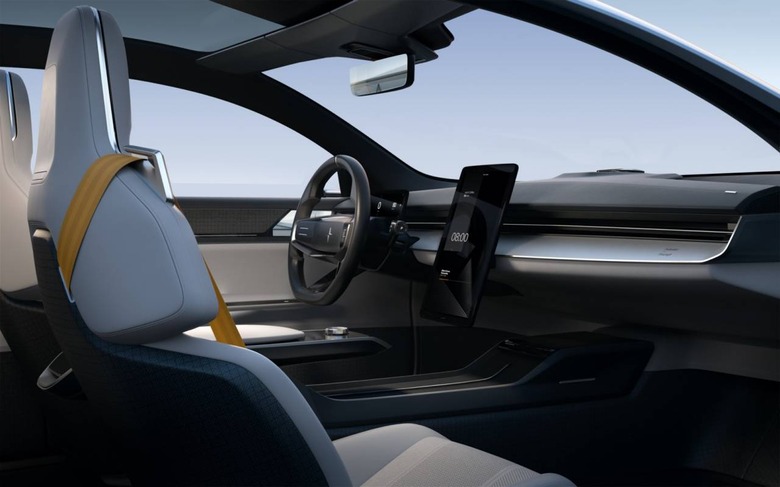
So this kind of hierarchy of systems, that is something that that we are always trying to keep under control. It's this minimalistic design expression that we want, but then everything is there when you need it.
The eye-tracking was an interesting example because we discussed it a lot with our engineers: how can you benefit from it? The first idea would be, well, you make it bigger when you look at it, right? I mean, things become bigger. But actually the opposite is the case.
So when you don't look at it, you need it fairly big so you don't have to look at it, you still can read the number in the periphery of your field of view. But when you actually look at it, it doesn't help if it's big because you can see it anyway! So it shrinks down, adds more; it shrinks and adds more in-depth information. You know, that's what I'm saying with layers: then the layers pop up when you look at it, for that fraction of second that you look at it, you get the information that you might want. But when you look away, you don't want all this text that tells you "look at me look like me." You want it to be as big and as simple as possible. Sometimes it's the opposite of what you think that happens when you apply a certain sensor system."
One last question – and I know you can't talk about unannounced products – but out of everything in the Precept concept, what are you most excited about coming to future production Polestar vehicles?
"Many of the features that we brought into the concept, we are going to see in some shape or form in future production cars. But I would say the most exciting thing is – and it's not just a feature – the most exciting thing is that with Precept we've made clear that we, as a brand, Polestar is here to stay.
Polestar is not a spin-off or add-on to Volvo. Polestar is a completely unique performance electric brand. Maybe it sounds trivial, but for a designer and for the team, to get this kind of emancipation, to get that step right for people to say "yes, it's a unique design, it's feels right as a concept in its own right." That's a big step.
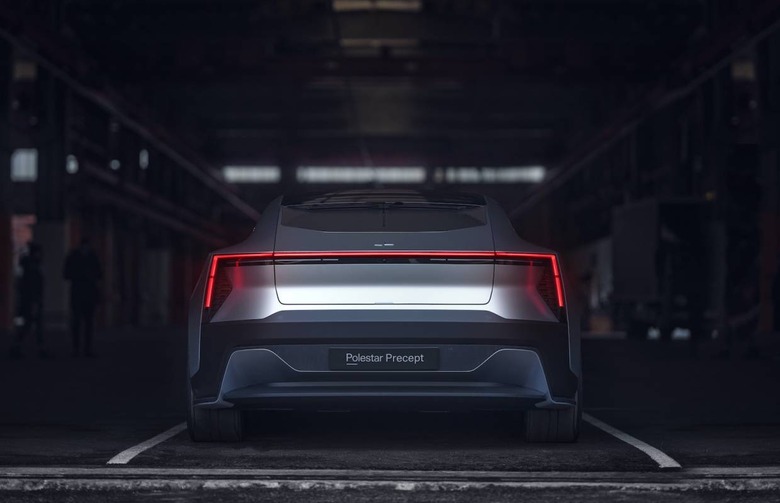
We just made that step, and we're just now exchanging feedback on this. So far, I think, the feedback was very good. People understand that it's still part of the group, but it's its own character. And, you know how many different expressions are out there: it's an industry on steroids! So it's quite a big step for us, so that's definitely the most exciting thing."
